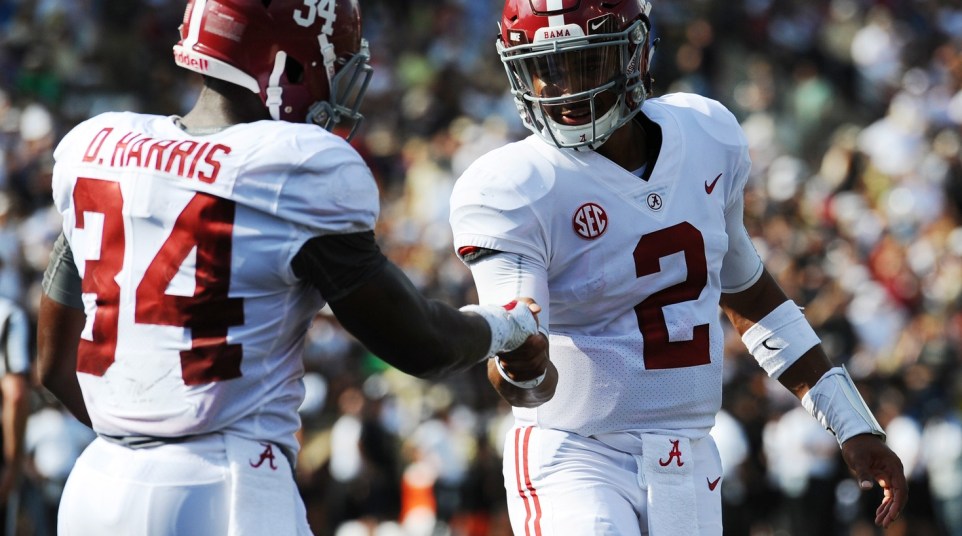
Can Ole Miss stop Alabama's run game? It won't be easy
Alabama’s run game has been the focal point of its offensive identity for years, and this season has been no different.
The team’s ground game is led by sophomore quarterback Jalen Hurts and junior running back Damien Harris, but that doesn’t mean they are the only contributors. The Tide may have the deepest stable of running backs in the country.
Ole Miss, on the other hand, fields one of the worst run defenses (184 yards allowed per game) in all of college football — ranked 96th out of 130 schools in the FBS, to be exact.
That’s a dangerous combination when you consider that Alabama currently has a top 5 unit on the ground, gaining 303.3 yards per contest.
- Jalen Hurts (QB) – 360 yards (8.0 ypc), 3 TDs
- Damien Harris – 309 yards (8.1 ypc), 6 TDs
- Bo Scarbrough – 221 yards (5.0 ypc), 3 TDs
- Najee Harris – 156 yards (5.2 ypc)
- Josh Jacobs – 34 yards (6.8 ypc)
As Brian Robinson proved against Vanderbilt, these aren’t the only guys on the roster capable of cranking out yards in the run game — the true freshman finished with 51 yards and a touchdown on only 5 carries — but the players listed above are the main contributors, of course.
Tide fans see this stable of runners as a solution. Ole Miss fans should see it as a problem going into Saturday night’s game in Tuscaloosa.
The Ole Miss offense is the most productive in the conference — averaging just under 500 yards — but if Alabama can dominate the time of possession and control the clock, it could end up being a major issue for the Rebels.
Alabama was able to do just that versus Vanderbilt in Week 4, dominating the time of possession 42:55 to 17:05. That should continue to be crucial part of the game plan in order to keep the Rebels’ high-powered offense off the field as much as possible.
The lack of experience that plagued the right side of Alabama’s offensive line to start the season is becoming less of an issue as the season progresses. With that issue dwindling, the run game is coming alive, even if you don’t include the production coming from Hurts.
The timing of Alabama’s run game coming together is unfortunate for Ole Miss. The team’s defense is built on speed, and that’s reflected by its 4-2-5 alignment. The extra defensive back provides support against opposing team’s passing attacks, but it puts the defense at a disadvantage when it comes to stopping the run.
The Rebels front seven is led by senior edge rusher Marquis Haynes. While he is an impressive pass rusher (25 sacks in 40 career games), his 6-3, 230-pound frame doesn’t give him much of a chance to be effective versus the run as a 4-3 defensive end.
The lack of traditional size is a pretty common theme along the Ole Miss defensive line, however. The four starters only average out to be 6-3, 265 pounds.
In comparison, the average of Alabama’s starting five on its offensive line comes out to be 6-5, 313 pounds.
That difference of almost 50 pounds could actually end up being the difference in this game. Over the course of four quarters, it wouldn’t be surprising to see Alabama’s run game start to take its toll on the front seven of Ole Miss.
The Rebels are going to need two things if they want to leave Tuscaloosa with a win: 1) an efficient, effective offense that is able to capitalize on every opportunity given by Alabama and 2) a defense that finds a way to create stops at critical moments in the game.
Neither scenario is likely, but crazier things have happened.
